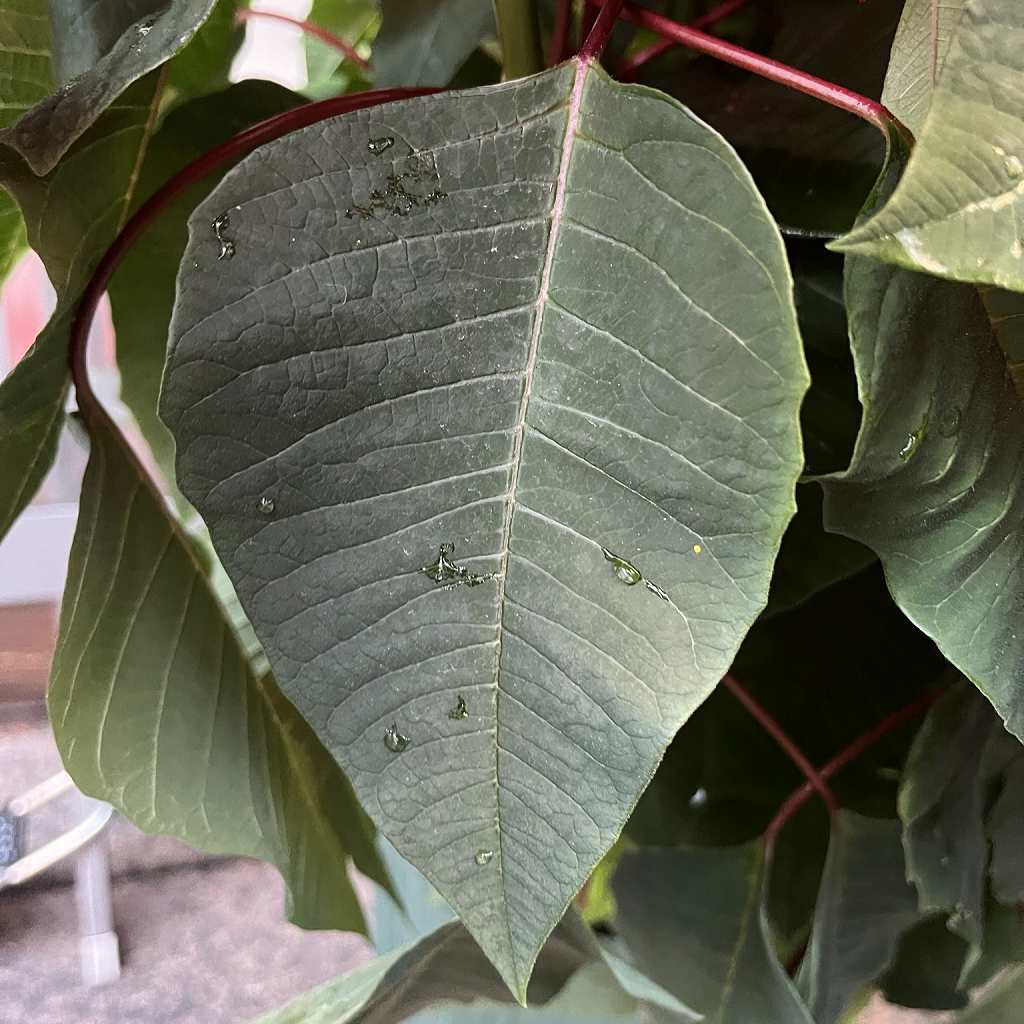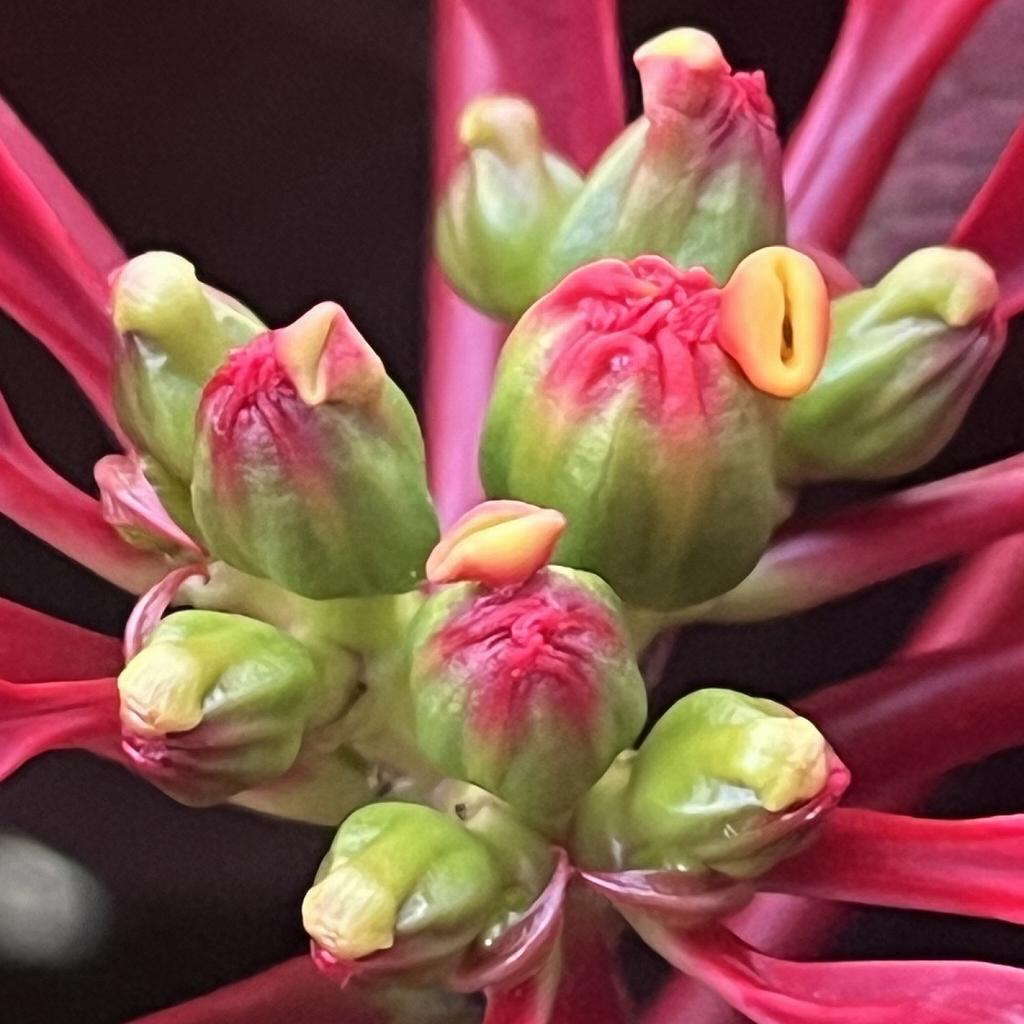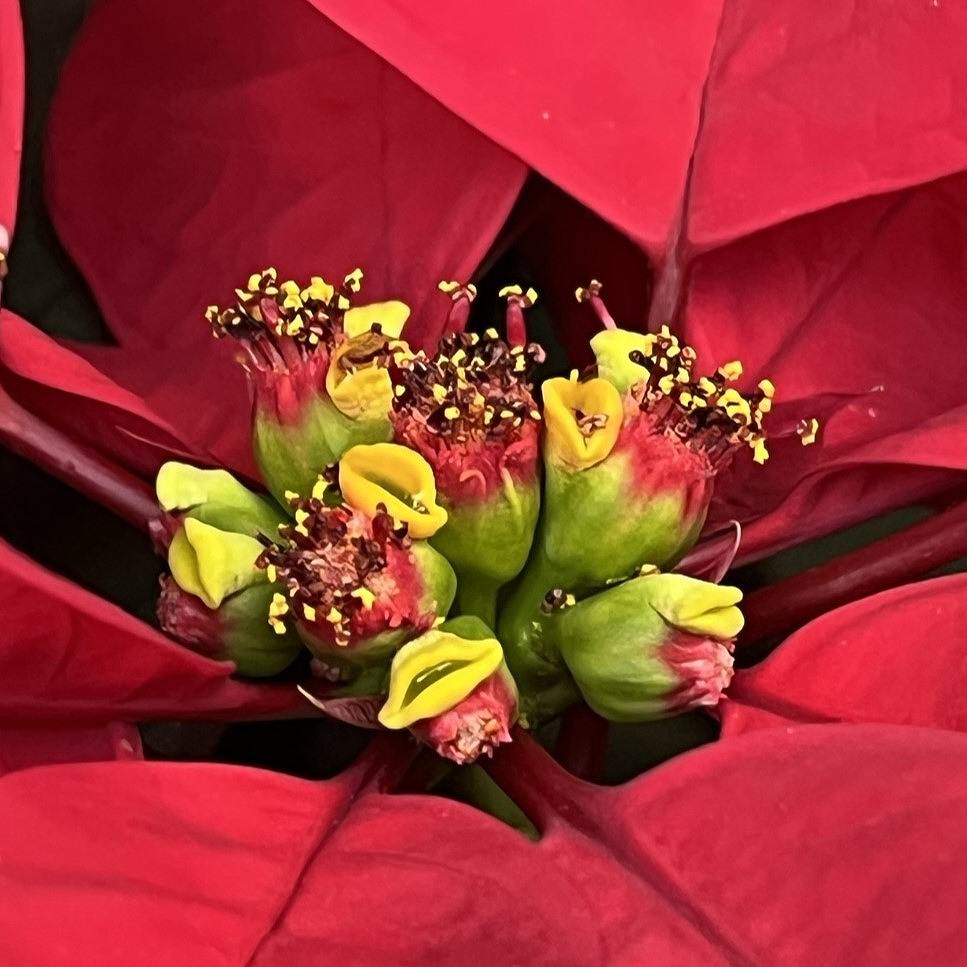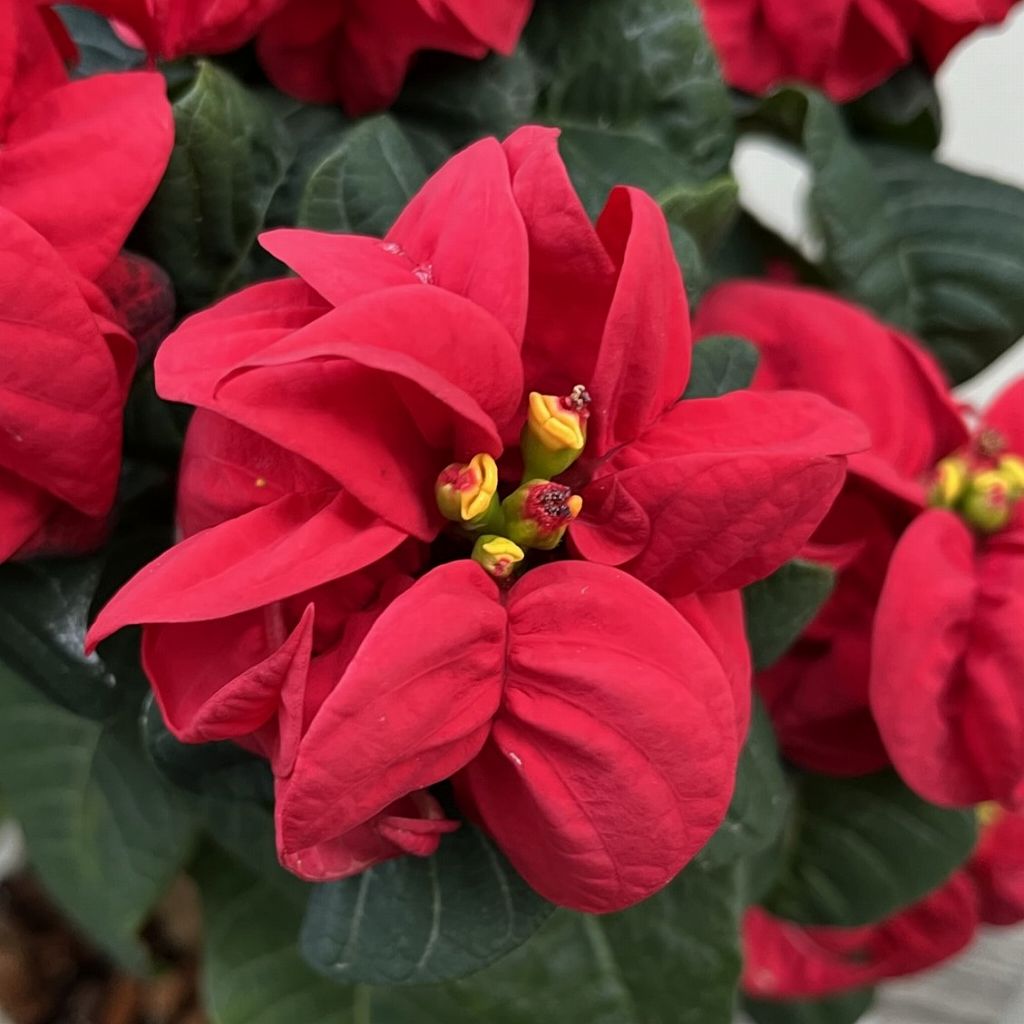ポインセチアは花の少ない12月下旬に赤色の苞が鮮やかな「クリスマスフラワー」。花言葉も「聖夜」「祝福する」「幸運を祈る」などです。
Poinsettia is “Christmas flower” with bright red bracts in late December when there are few flowers. The language of flowers is “Holy Night”, “Bless”, and “Pray for Good Luck”.
【仮名】ポインセチア, ショウジョウボク, クリスマスフラワー
【和名】猩々木
【英名】Poinsettia, Christmas Flower
【学名】Euphorbia pulcherrima
【誕生】12/ 09, 12/ 22, 12/ 25
【開花】01, 02, 12月
【花色】White, Pink, Red, Yellow
ポインセチア
ポインセチアの生態

ポインセチアはトウダイグサ科の常緑低木。原産地はメキシコで、日本へは明治時代に渡来しました。温暖な九州の南部を除いて地植えに耐えられず、夏は屋外で、冬は屋内で鉢植え栽培。クリスマスを象徴する花木でもあり、花言葉は「聖夜」「祝福する」「幸運を祈る」などです。
ポインセチアの名前

ポインセチアの名前の由来は米国の初代メキシコ公使ポインセットが帰国時に持ち出し、世界中に広がったためです。花の少ない12月下旬に赤色の苞が鮮やかなので別名「クリスマスフラワー」とも。和名は伝説上の猿「猩猩」の血が赤色の染料に用いられたという故事に由来します。
ポインセチアの姿形

ポインセチアの葉は互生し、先端が尖った楕円形で緑色。苞は10枚あり、先端が尖った楕円形で赤色です。花は小さな壺形で、苞の中心に密集して黄緑色。雄しべは短く密生し、雌しべは長く柱頭が2裂で、いずれも赤色です。蜜腺は唇のように突き出て黄色。花後は蒴果を結びます。
ポインセチアの近縁

ポインセチアは苞の形や色が豊富です。矮性種「ウィンターローズ」は苞が丸く小さく重なって八重咲きのバラのよう。赤色だけでなく白色や桃色、斑入りもあります。一方、同じトウダイグサ属で姿形も名前も似ている「猩々草」は苞が赤色になるものの、先端に緑色を残す1年草。
ポインセチアの利用

ポインセチアは9月くらいから朝夕、段ボール箱などを被せて日照を遮ってやると開花が促され、ちょうどクリスマスのころ、苞が鮮やかな赤色に。株は挿し木で容易に殖やせますが、枝葉を傷つけると白い乳液が染み出し、皮膚に触れると水泡やかぶれなどが生じるため要注意です。
Poinsettia

Poinsettia is an evergreen shrub of the Euphorbiaceae family. The place of origin is Mexico, and it was brought to Japan in the Meiji era. Except for the warm southern part of Kyushu, it does not tolerate planting in the ground, so it is potted outdoors in the summer and indoors in the winter. It is also a flower tree that symbolizes Christmas, and the language of flowers is “Holy Night”, “Bless”, and “Pray for Good Luck”.
Poinsettia comes from Poinset, the first American envoy to Mexico. He took it with him on his return, and it spread around the world. It is also known as “Christmas flower” because the red bracts are bright in late December when there are few flowers. The Japanese name comes from the legend that the blood of the legendary monkey was used as a red dye.
Poinsettia leaves are alternate, oval and green with pointed tips. There are 10 bracts, which are oval and red with pointed tips. The flowers are small, urn-shaped, densely clustered in the center of the bracts, and yellow-green. The stamens are short and dense, and the pistils are long and have a 2-lobed stigma, both of which are red. The nectaries stick out like lips and are yellow. After flowering, it bears capsules.
Poinsettia comes in a wide variety of bract shapes and colors. The dwarf type “Winter Rose” has round, small bracts that overlap like double-flowered roses. Not only red, but also white, pink, and variegated. On the other hand, “Fire On The Mountain”, which belongs to the same genus Euphorbia and has a similar shape, is an annual herb with red bracts but green tips.
Covering the Poinsettia with cardboard boxes in the mornings and evenings from September to block the sunshine encourages flowering, and around Christmas, the bracts turn bright red. The plant can be propagated easily by cuttings, but care must be taken as if the branches and leaves are damaged, a white milky sap will ooze out, and if it touches the skin, it will cause blisters and rashes.



